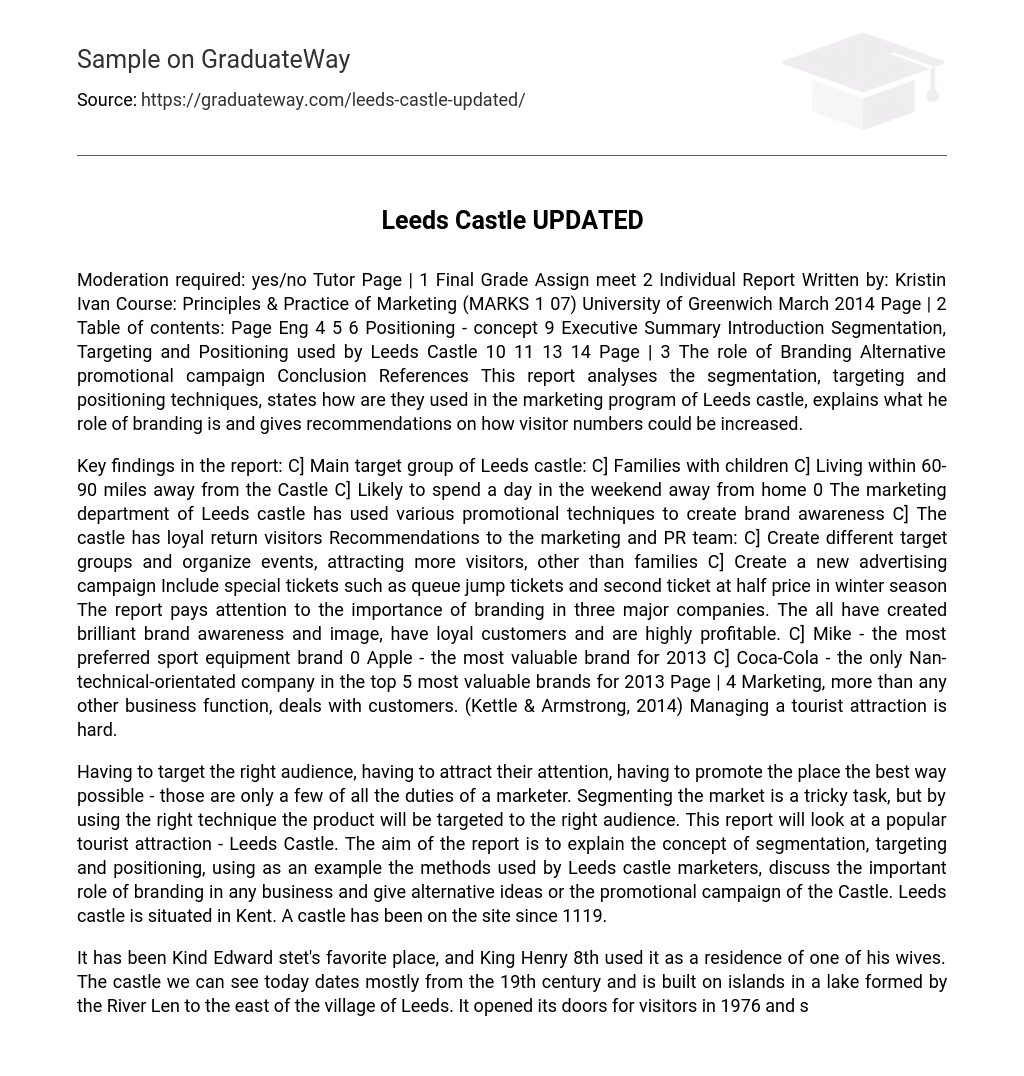What is a Market? The term “market” is understood differently by different people. But it means one thing – people or organizations with needs or wants and with the ability and the willingness to buy. A group of people or an organization that lacks any one of these characteristics is not a market. (Lamb, et al. , 2004) In order to have a successful product on the market, companies need to go through a threes process.
What is Market Segmentation? Buyers in any market differ in their wants, resources, locations, buying attitudes, ND buying practices. Through market segmentation, companies divide large markets into smaller segments that can be reached more efficiently and effectively with products and services that match their unique needs. Kettle & Armstrong, 2014) The purpose of market segmentation is to enable the marketer to tailor marketing mixes to meet the needs of one or more specific segments. (Lamb, et al. , 2004)
Why is market segmentation important? In order to achieve SUccess, every business, product or organization has to be aimed to the correct audience. Market segmentation helps marketers to define customer needs and wants. (Lamb, et al. , 2004) If a certain product is aimed at the wrong audience, no matter how good it is, there’s higher possibility for it to fail than if it is aimed at the people who actually need it.
How does it work? There is no single way to segment a market. A marketer has to try different segmentation variables, alone and in combination, to find the best way to view the market structure. Kettle & Armstrong, 2014) When using this way of segmentation, marketers look at age, gender, income, occupation, religion, ethnicity, etc. Cryptographic segmentation looks at the lifestyle of the customers, as well as their personality and social class. Behavioral segmentation looks at the benefits the consumer seeks from the product. Also, it looks at the user status, usage rate and buying occasions.
What is Targeting? Targeting attractive market segments and developing marketing strategies pacifically tailored to serve the chosen segments is what good marketers do. ” (Walker & Mullions, 2011) After segmenting the market and the organization’s segment opportunities are revealed, it is time for the segments to be evaluated and a decision should be made – which segments could the business serve best. Target marketing is the process of selecting one or more market segments and then developing a product to offer which is aimed specifically at those segments. Once the target market segments have been identified, the key attitudes of those customers towards the product category should be determined.
The very basis of target marketing is dependent on a link between the customers and the segment defined. (Dock, et al. , 2001) Selecting target markets is a major decision that influences and often determines the firm’s marketing mix. (Lamb, et al. , 2004) In order to select the right target market, marketers use different strategies. Three general strategies are listed below: – Undifferentiated Targeting is an approach that views the market as one big market with no individual segments, requiring a single marketing mix. When using this strategy, companies could save on production or marketing costs. (Lamb, et al. 2004)
Concentrated Targeting is a strategy used to select one segment of a market for targeting marketing efforts. (Lamb, et al. 2004) When using this strategy, a company is focused on only one segment and it is able to concentrate on the needs of this exact group of people, making it easier to satisfy its customers. Enlistment Targeting is used when a company decides to choose two or more wilderness segments and create separate marketing mix for each of them. Sometimes firms choose to change just one part of the marketing mix for each segment, for example the promotional appeals.
What is Positioning? Positioning is not what you do to a product, positioning is what you do to the mind of the prospect” (Trout, 1981) Product positioning refers to consumers’ perceptions of a product’s attributes, uses, quality, and advantages and disadvantages relative to competing brands.
Marketers often conduct marketing research studies to analyses consumer preferences and to construct product position maps that plot their products’ positions in relation to those of competitors’ offerings. (Boone & Kurt, 2006) Competitive positioning demands that an organization considers what it is offering compared to competitors for the same target customer segment. Dock, et al. , 2001) A company has to develop a product positioning strategy for each segment it chooses to serve. This relates to the task of ensuring that its products occupy a planned-for place in chosen target markets, pertinent to opposing competition in the marketplace.





